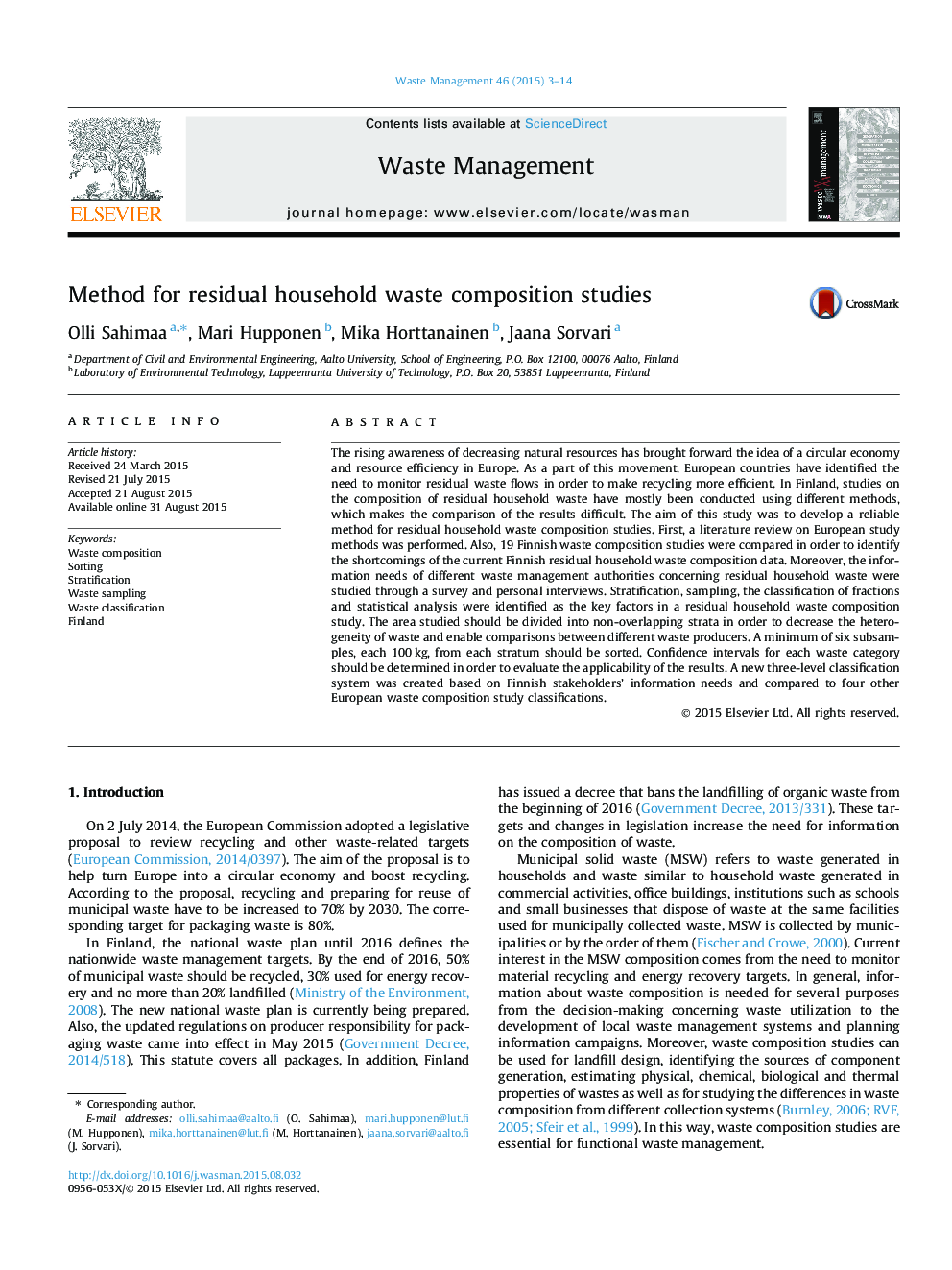| کد مقاله | کد نشریه | سال انتشار | مقاله انگلیسی | نسخه تمام متن |
|---|---|---|---|---|
| 6354405 | 1622639 | 2015 | 12 صفحه PDF | دانلود رایگان |
- A new method for residual household waste composition studies was developed.
- Good practices in European waste composition study methods were identified.
- 19 Finnish waste composition studies were compared.
- Stratification, sampling, classification and statistical analysis are key elements.
- The method enables compiling valid household waste composition data.
The rising awareness of decreasing natural resources has brought forward the idea of a circular economy and resource efficiency in Europe. As a part of this movement, European countries have identified the need to monitor residual waste flows in order to make recycling more efficient. In Finland, studies on the composition of residual household waste have mostly been conducted using different methods, which makes the comparison of the results difficult. The aim of this study was to develop a reliable method for residual household waste composition studies. First, a literature review on European study methods was performed. Also, 19 Finnish waste composition studies were compared in order to identify the shortcomings of the current Finnish residual household waste composition data. Moreover, the information needs of different waste management authorities concerning residual household waste were studied through a survey and personal interviews. Stratification, sampling, the classification of fractions and statistical analysis were identified as the key factors in a residual household waste composition study. The area studied should be divided into non-overlapping strata in order to decrease the heterogeneity of waste and enable comparisons between different waste producers. A minimum of six subsamples, each 100Â kg, from each stratum should be sorted. Confidence intervals for each waste category should be determined in order to evaluate the applicability of the results. A new three-level classification system was created based on Finnish stakeholders' information needs and compared to four other European waste composition study classifications.
Journal: Waste Management - Volume 46, December 2015, Pages 3-14
